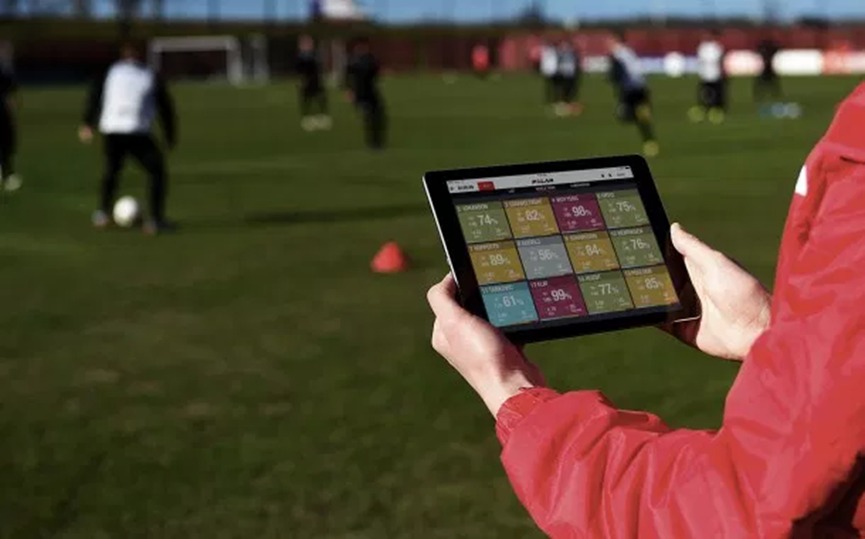
The world of football has witnessed numerous phases of evolution over the last five decades, some of which have been thanks to the use of data intelligence.
From the rough and muddy pitches in the ’70s and ’80s to tailor-made modern grounds in the ’90s, development of ultra-modern stadiums and training facilities in 2000s along with the ever-increasing use of cutting-edge technology to ensure fair and transparent governance and carry out in-depth performance evaluation, football has come a long way in terms of adopting a modern approach to drive day to day operations.
One of the major milestones over the years has been the incorporation of a data-driven approach in the management framework.
The ever-evolving data intelligence technology means the level of granularity at which players are monitored and analysed has increased swiftly.
Every pass, sprint, and tackle made by players produces information that describes their technical capabilities and reaction to events that occur on the field of play.
As a result, a large volume of real-time data is generated which is then used to analyse a player’s individual performance and contribution to the team in various phases of the game.
This approach has yielded success not just on the pitch but also off it, allowing football associations and governing bodies to establish a modern framework of operations.
Drills, Duration, and Diet: Driven by Data Intelligence

Owing to the influx of advanced techniques to track and monitor players, an ocean of data about them is available which highlights their strengths and weaknesses when analysed thoroughly.
This makes the modern game even more demanding as teams aim to capitalise on every single detail obtained from analysis leaving virtually no room for error in preparation.
Hence, the physical well being of players is crucial to the success of the team.
The effort put in by players during each training session is measured using a range of statistics such as distance covered, number of sprints, average heart rate, average speed to name a few.
These metrics are collected using wearable devices in the form of GPS monitoring systems. The real-time data collected through these devices allows analysts to monitor the workload for each individual player.
Such analysis carried out continuously over a period of time produces a pattern that shows each player’s physical traits and capabilities.
Using this information, optimised workload for each individual player can be designed.
The insights gained from such analysis helps managers to decide an appropriate amount of playing time for each player and ensure good man management.
It also helps sports scientists and nutritionists to work with players for devising an appropriate diet plan that compliments their body type and requirements.
Such data-driven scheduling of training sessions and diet routine is invaluable for managers and the coaching staff as it enables them to strike a balance between intense training drills and recovery sessions to ensure all players are fit, fresh and ready for the match.
Big Data, Big Advantage

Identifying the opponent’s strengths and weaknesses is often an effective way to start preparing for a match.
A large volume of quantitative and qualitative data intelligence available to the analysts, also termed as ‘big data’ enables them to find patterns and trends that could prove to be crucial to outsmart the opposition.
It highlights the opponent’s response to different in-game situations and indicates potential strategies that would ensure the team is proactive rather than reactive to the opponent’s game plan.
Data intelligence has proved to be instrumental in identifying the most influential player or the most effective combination of players for a team.
Such insights are drawn by monitoring the statistics that describe the contribution of a player towards a team’s success or pairwise assessment of players that provides useful information for devising a coherent tactical setup and selecting players for a particular match.
For instance, a player who is capable of playing in several positions on the field could prove to be tricky to integrate into the tactical setup for the manager.
Assessing his performance over a period of time in various positions indicates a position that would be best suited for the team’s tactical approach.
Another example would include a manager trying to find the best combination of players that would yield the maximum number of goals.
Assessing the team’s goal-scoring prowess with different combinations of players provides indicators to pick an ideal blend of players for a specific fixture.
Analysing a team’s tactical shape can provide valuable information to managers and coaches about tactical setup and coordination within a group of players.
This is usually achieved by calculating the average position of each player on the field using latitude and longitude coordinates.
If such information is available for a group of players in a team, the centroid can be calculated using the mean latitude and longitude position of all players.
The team’s coordination can be assessed by considering the movement of the centroid during offensive and defensive transitions.
Such information can be analysed constructively using interactive visual aids such as heat maps.
They are used to highlight the areas on the field where a team or a particular player has spent the most time.
Germany’s national team utilised a similar recipe of big data analytics and shrewd management effectively during the 2014 FIFA World Cup tournament, as explained in an article here.
Scouting and Signing: Search for a Superstar

In club football, trading of players between clubs is a recurrent practice as players are contracted to clubs for a fixed time period.
There is no standard framework for player valuation as the value depends on various factors that constantly vary over time.
Apart from a player’s performance evaluation, the value also depends on factors such as age, the potential for improvement, personal preferences, and popularity.
In order to assess the impact of these dynamically changing factors, clubs are now turning to data scouts and analysts who can make the best use of data to recommend a player best suited for the team.
Finding players who have great chemistry when paired together in a team is crucial to a team’s chances of achieving their target and hence, a data analyst has proved to be one of the most important recruits for clubs.
As clubs nowadays are equipped with data and insights for virtually all players around the globe, the negotiation process for trading the players has evolved considerably.
It still involves a long and tedious process for the parties involved to find an agreement but having data-driven insights on hand makes it a bit less complex.
Clubs do their homework on the players they are interested to sign before sitting at the negotiation table.
Similarly, the clubs are aware of a player’s net worth when they decide to trade him to another club.
The data scouts are often more valuable for clubs with limited financial resources as their work enables clubs to find lesser-known but talented players, also known as ‘hidden gems’ at a reasonable price.
These are talented young players with great potential and huge market value.
Many clubs have adapted such a business model of developing young players and selling them to bigger clubs for huge profits.
One such example that really stands out is the recruitment strategy adopted by a Portuguese football club, FC Porto. They have achieved massive success by employing the “buy young, sell early” approach as described in a report by End2End Football.
In the words of the great Italian manager Arrigo Sacchi: “Football is the most important of the least important things in life”.
His quote sums up the bond between the sport and its followers in this era of a technological revolution in sports.
Considering the ever-evolving state of the game in terms of technology and global reach, the experience for the fans around the world is more immersive now than it has been ever before.
Easy access to a wide range of statistics and expert analyses based on those allows them to engage with the sport even more closely.
The data intelligence revolution in football and sports, in general, is here to stay and organisations have realised the value of a carefully designed data-driven decision-making framework.
A successful football team now relies not only on the tactical nous of the manager but also on intelligence gained from quantitative and qualitative analytics.
Having access to high-quality data intelligence is a powerful tool to find a chink in the armor of opponents as it opens up avenues to exploit those vulnerabilities.
When used strategically, data tells a compelling story and the rewards are substantial for anyone who is willing to listen.



